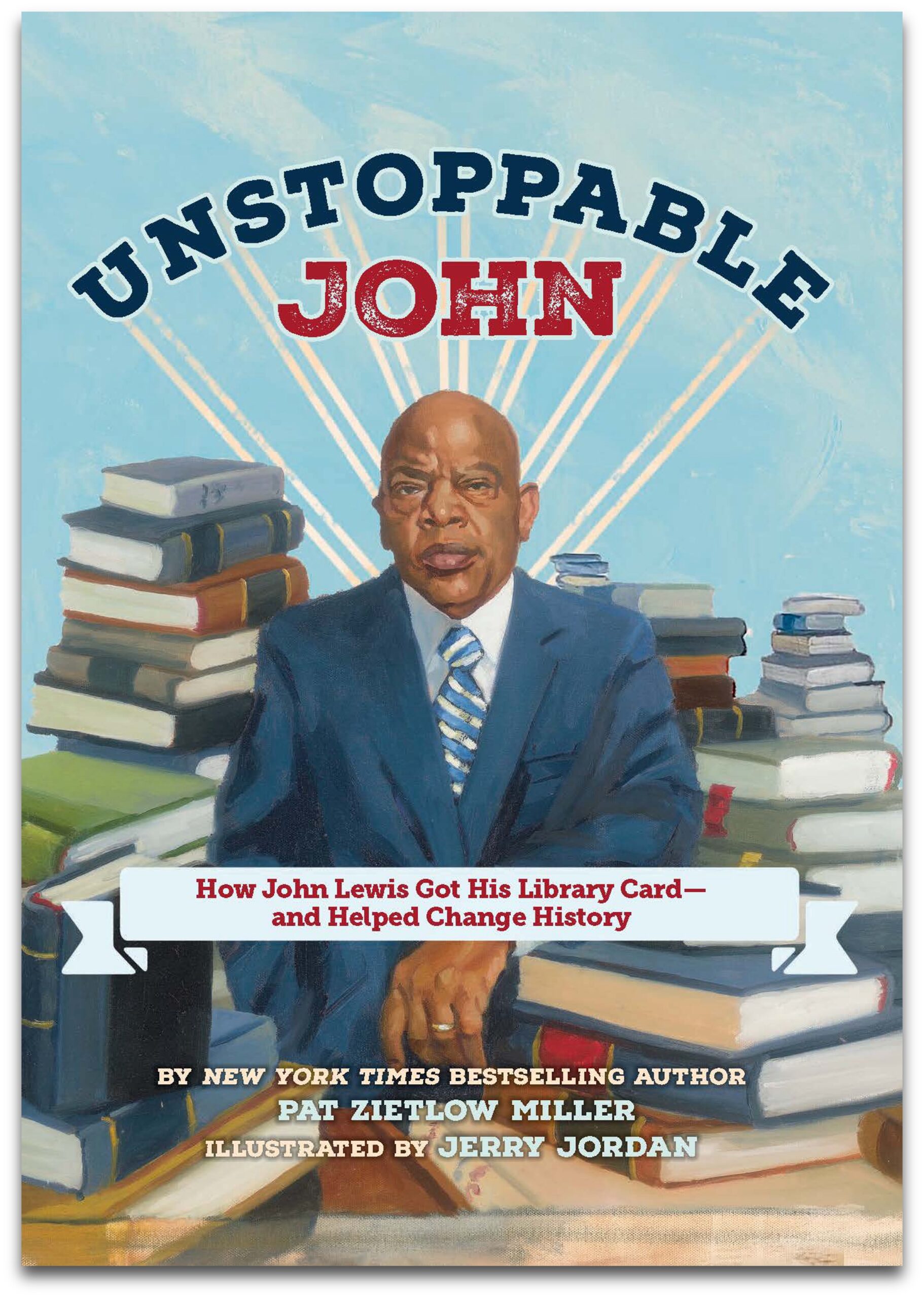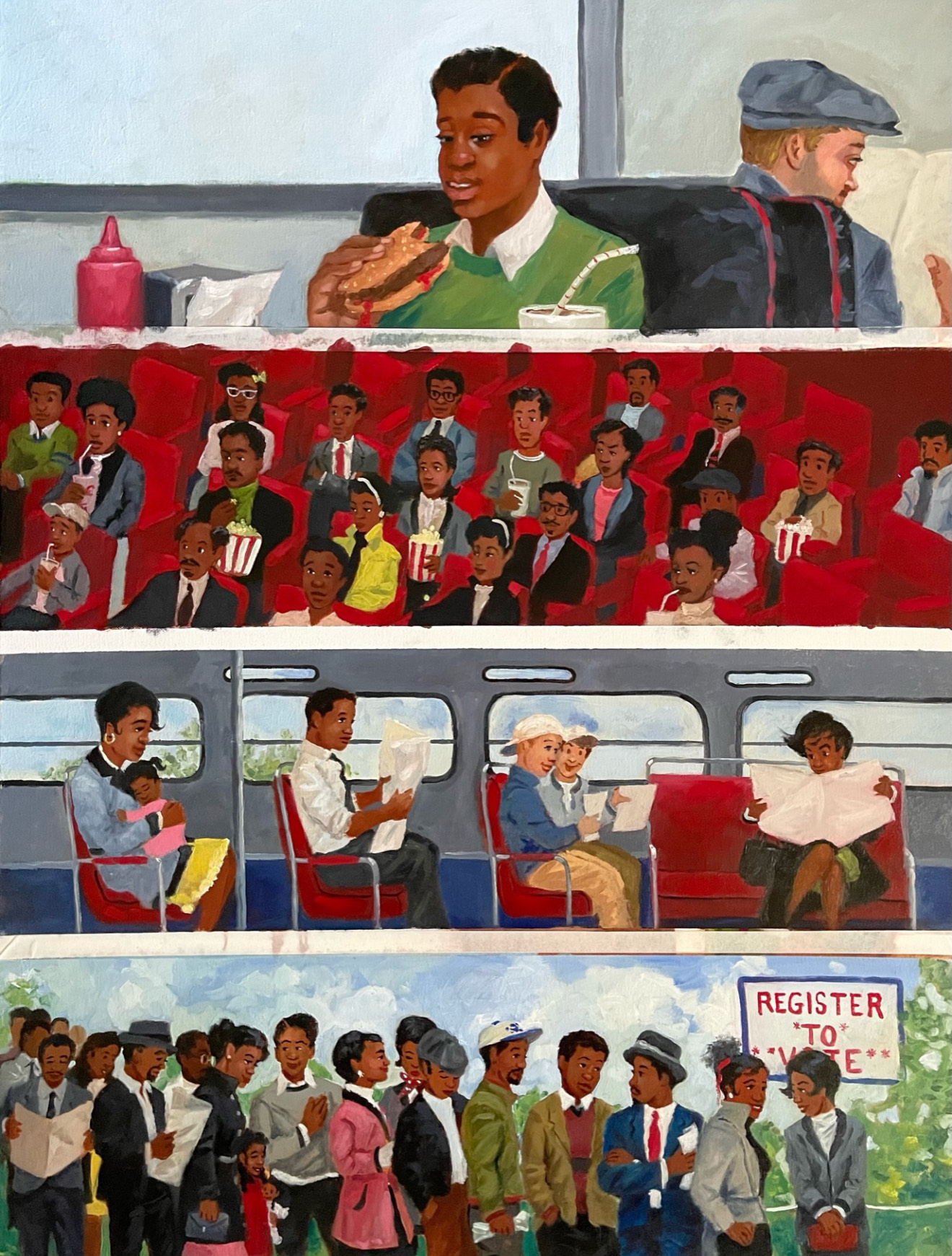The brutality of racism is a delicate topic for a young children’s book. But Madison-based children’s author Pat Zietlow Miller told WPR’s “Wisconsin Today” that young children intuitively understand the concept of fairness.
She relied on this understanding in telling the story of how John Lewis, the civil rights leader and congressman who died in 2020, fought to make sure that everyone could get a library card.
“John Lewis had some wonderful things happen to him, and he had some horrible things happen to him, and I didn’t want to downplay the horribleness of what happened,” Zietlow Miller said.
Stay informed on the latest news
Sign up for WPR’s email newsletter.
“I think kids have an innate, inborn ability to determine when something is fair and when it isn’t,” she added. “And so I leaned into the fact that what happened to him was not fair. It was also racist and it was a lot of other things, but it wasn’t fair. And then I tried to tell the story as simply as possible — like just straightforward, simple words, simple everything.”
Zietlow Miller collaborated with Madison-based artist Jerry Jordan on the new book “Unstoppable John: How John Lewis Got His Library Card — and Helped Change History.”
They joined “Wisconsin Today” to talk about how the book came together and what they hoped to convey about Lewis’ life.
The following has been edited for brevity and clarity.

Kate Archer Kent: Jerry, how did you prepare yourself as an artist for this project?
Jerry Jordan: Like for all illustration jobs, I had to do some research: Look up the name of the library that [Lewis] tried to get books from, find pictures of him as a kid, find the house he lived in, to get some ideas of his surroundings. So, I had to do the research as well as just look at a lot of pictures of him and do a lot of sketching, to try to get a good likeness.
KAK: Pat writes the book and then turns it over to you to illustrate. Now you’ve got all of these words to work with. How do you approach these illustrations?
JJ: Well, I read the stories several times — continuously, just to make sure my drawings that I’m using for that particular page matches the feeling that Pat is trying to get across with her text. Sometimes it takes multiple drawings and sketches to get it right. Then when I think I’ve got it right, I’ll send it off to the editor and let them take a look at it, and hopefully they agree. And then when I get the green light, I get to work and start painting — do the fun part.

KAK: Pat, this is your 21st children’s book and I’m wondering: Do you ever have conversations with kids about your books, or have they ever given you some valuable input?
Pat Zietlow Miller: I do school visits where I go in and I talk to kids, and I read my books, and I do story times at bookstores. And what I love about kids in the audience is they tell you exactly what they think. On the good side, I’ve got kids who have said things like, “This is my favorite book” or “I have this book at home,” which always makes me happy.
But one time, I was reading to a group of preschoolers, and this 3-year-old looked at me and said, “This is boring.” So you get it like all the way around, and that’s cool. I’ve had kids help me brainstorm ideas for future books, too, which is always fun, because they are very free thinking.
KAK: Jerry, President Trump has taken such a hard line against any efforts to promote diversity, equity and inclusion. What do you make of this hostility toward inclusion as you look at your book projects?
JJ: I don’t understand it. I know that the argument is, “We don’t want to make white kids feel bad about themselves,” and no one wants that to happen. But I will say nobody was really all that concerned about me when I was a little kid in school, and there were very few, if any, books about African Americans or any other person of color. We should not try to deny the history.
KAK: Pat, what are you thinking at this moment as a children’s author?
PZM: The beauty of books is they tell your story as a reader, and they tell the story of people around you as a person, and so you can see yourself. You can see other people. You can imagine other ways of being, other ways of living, and that increases your empathy and just your general overall humanity.
The more we can understand and connect with other people … we’re just better all-around humans because of that. When I was growing up in Oshkosh, Wisconsin, I had a very limited understanding of what the world might look like beyond that. But books showed me. And so the more books from more perspectives, from more equally valid realities, the better.
KAK: Jerry, do you find that we could value picture books more?
JJ: Picture books are a gateway to reading — just like Pat said, they open up the world to you. And I think the best way to get a child excited about reading is to start with picture books, so that they can look at the pictures and match it up with the text and get lost in the story.
Wisconsin Public Radio, © Copyright 2025, Board of Regents of the University of Wisconsin System and Wisconsin Educational Communications Board.






